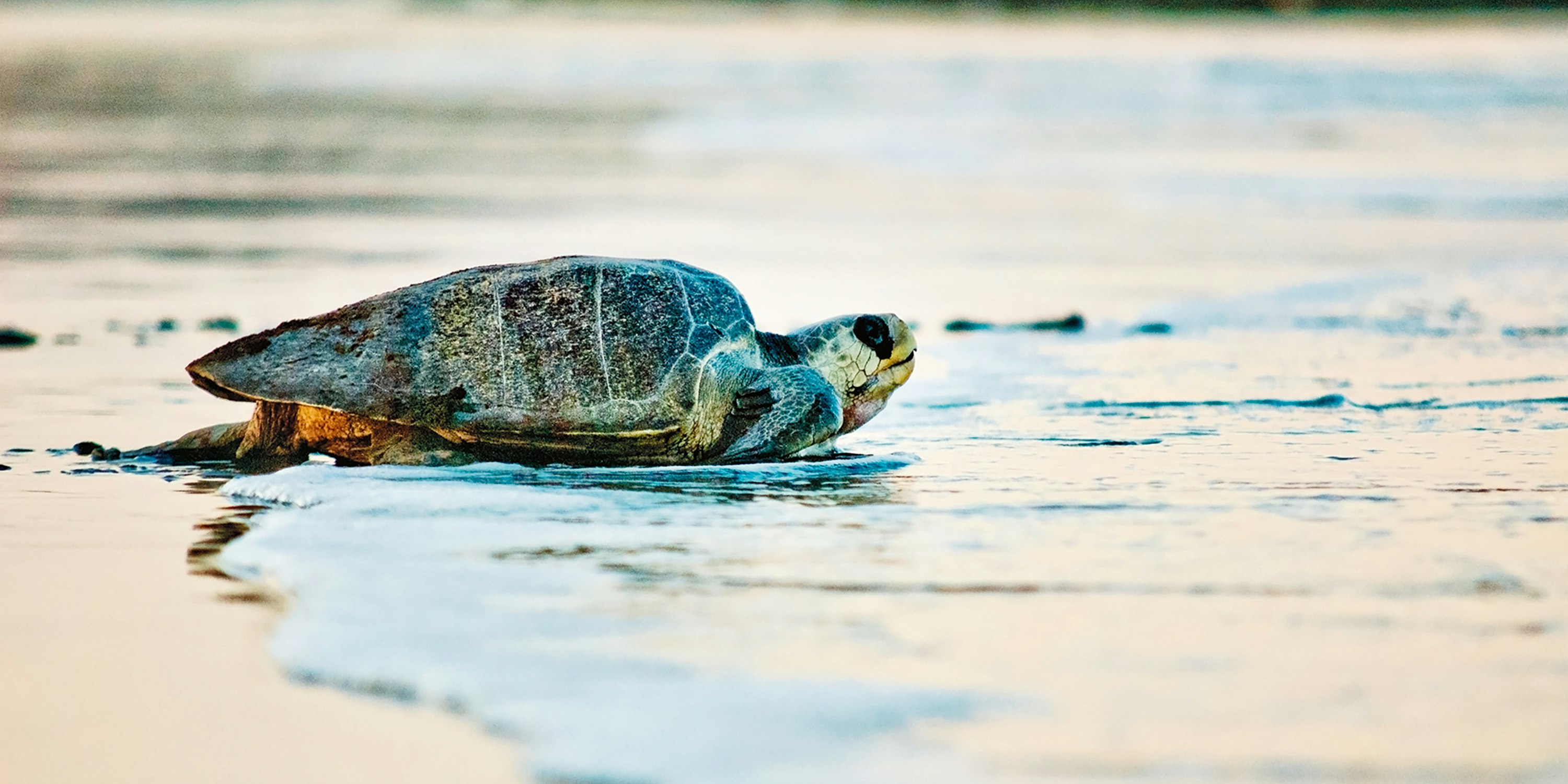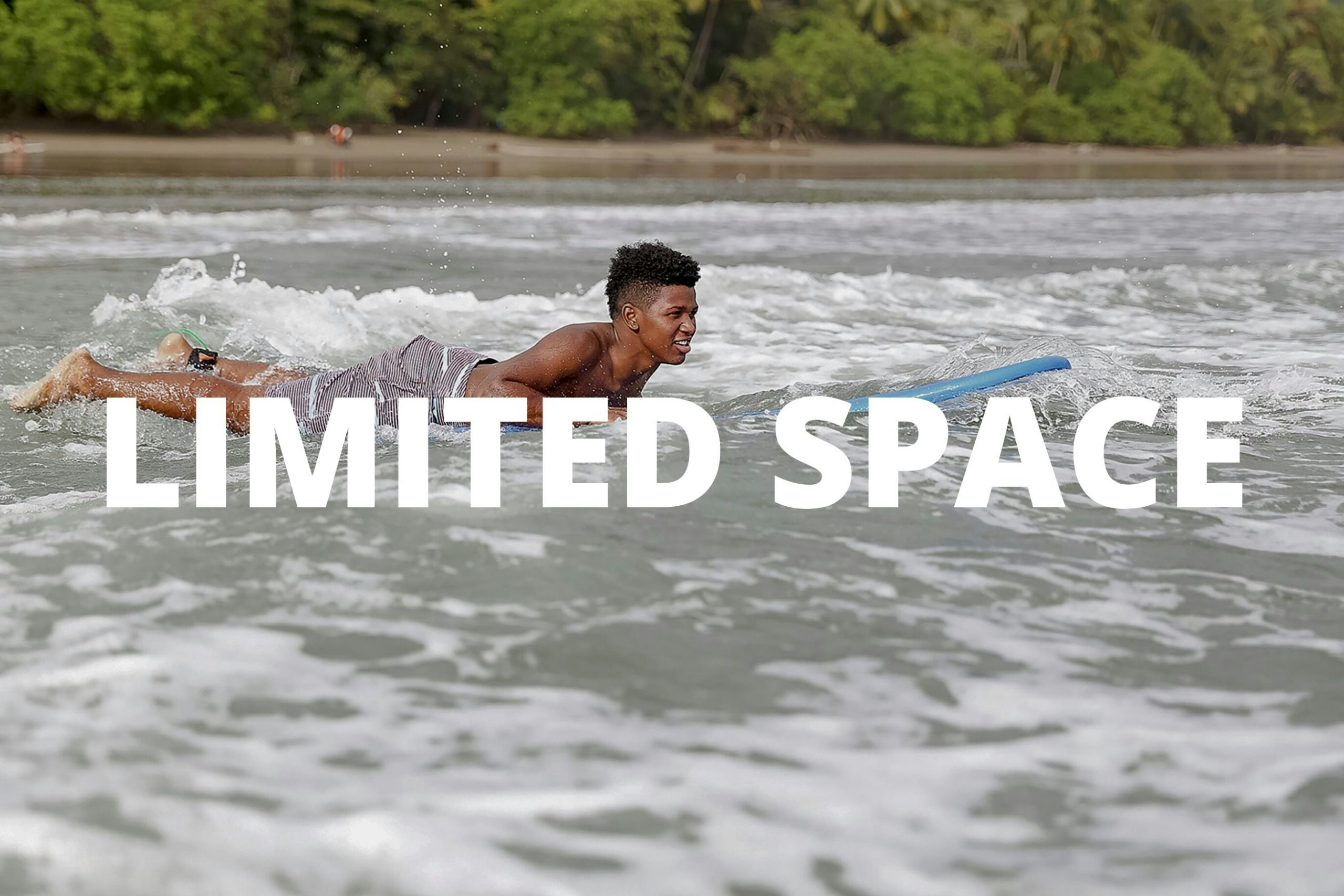2024 Departure Dates
| June 18 – June 25, 2024 | Very Limited | Enroll Now |
| June 25 – July 2, 2024 | Limited | Enroll Now |
| July 9 – July 16, 2024 | Very Limited | Enroll Now |
| July 16 – July 23, 2024 | Full | Waitlist |
| July 23 – July 30, 2024 | Available | Enroll Now |
| July 30 – Aug. 6, 2024 | Full | Waitlist |
Journey to a secluded beach on the Pacific coast to help protect Costa Rican sea turtles. These majestic creatures face threats to their nesting grounds from hunting, pollution, and development. While we can’t guarantee you’ll see a sea turtle, you’ll be certain to contribute to the conservation of this endangered species. In the mornings, join beach cleanup projects and help construct a hatchery. At night, monitor the beach for turtle nests, record the number of eggs you collect, and carefully transport them to the hatchery or a safer place along the beach. With help provided by expert volunteers, many of these eggs will hatch into healthy baby turtles and contribute in the preservation of sea turtles. In your free time, learn traditional art techniques and take trips to the beach town of Samara to learn how to surf the incredible waves of the Pacific Ocean.
-
-
Country:
-
-
-
Department:
- Student Travel
-
-
-
Duration:
-
8 Days
-
-
-
Max. Students:
-
18
-
-
-
Ages:
-
14-17
-
-
-
Cost:
- $2,895 plus Airfare
-
-
-
Service Hours:
-
35
-
-
-
Program Types:
-
-
-
At-A-Glance:
-
Accomodation Amenities
Adventure/Physicality
Educational Activities
On-Program Travel
-
Service Projects
During the day, primarily work on beach cleanup and hatchery projects. At night, embark on walks to gather eggs and release baby turtles.
Sea Turtle Basics
Costa Rica has four types of sea turtles: the critically endangered Hawksbill, the endangered Green turtle and the vulnerable Leatherback and Olive Ridley turtles. These sea turtles play an important role in the environment. They help maintain healthy seagrass beds and coral reefs. Their nests provide nutrients that contribute to coastal vegetation. Plus, the turtles play a role in controlling the jellyfish population.
Threats to Survival
The sea turtles have natural predators both on land and in the water, including animals that eat turtle eggs. However, human activities pose the greatest threat. The refuge has rivers on each side that feed into the ocean. Trash and debris in those rivers go out to sea and then come back in on the waves. That pollution hinders the ability of mother turtles to find a safe spot to dig a nest and lay eggs.
On top of that, the sea turtles are victims of fishing nets and poachers who use turtle eggs to make a popular bar drink. During one 2022 session, students saw how pervasive the hazards are. When they went on a dolphin-viewing boat ride, they encountered a sea turtle in distress. It had a life vest wrapped around one of its flippers. In response, one of the boat guides jumped into the water to cut the vest off the sea turtle.
Service Work
Students work diligently to remove hazards and save turtle eggs throughout the program,
2022 traveler Candace Leovao says one night she could see with her own eyes why this work is important.
“We had just cleaned up wood and the twigs, and then a turtle laid eggs there that night. So I could see that we were making a difference,” Candace said.
Once the eggs are laid, the students gather them to bring them to a hatchery. Last summer the number of eggs collected was staggering.
The final number: 6,403 eggs collected
Once the eggs hatch, the students bring buckets of baby turtles to the beach near the water and release them. They use red lights to help guide the turtles toward the water.
This program offers a unique opportunity to work directly with park rangers to save sea turtle species!
Itinerary Locations
San Jose: San Jose is the capital of Costa Rica and its largest city by far. It’s located in the center of the country. This program arrives and depart from San Jose, but adventures take place in much-less densely populated parts of the country.
Camaronal Wildlife Refuge: This refuge is located on the Pacific coast of the Nicoya Peninsula. It’s part of the large Tempisque Conservation Area, which includes a number of reserves. In 2006 the Camaronal Refuge has its first mass arrival of mother turtles in 15 years. Since then, poachers and new developments in the region have posed a growing threat, warranting increased efforts to protect the turtles.
Punta Islita: The small village is home to the only open-air contemporary art museum in the country.
Samara: This small coastal town is a great place to experience authentic Costa Rican culture. It’s located on a bay that is a wildlife reserve with pinkish sand and many tropical birds.
Carrillo Beach: This beautiful beach is in a less developed area than some touristy spots. The beach is on a bay that’s protected by rocky terrain. This makes the waves smaller, creating a great spot for snorkeling, swimming and boating.
Packing the right gear (and the right amounts) is the first step to an incredible travel experience. Follow these tips to pack like a pro:
Travel light. Pack only the essentials. You’ll need less than you think!
Consider no checked bag. We strongly recommend that you consider packing only a carry-on size bag. This prevents your luggage getting lost or separated from you, keeps your bag manageable, and helps you be more mobile on your travel day.
Bring the right clothes. Pack clothes that are culturally appropriate for your destination and acceptable for service projects. This means bringing long shorts (think Bermuda and basketball shorts), t-shirts with sleeves to cover shoulders, and appropriate footwear.
Leave your valuables behind. While traveling, it’s easier for things to get lost, stolen, or damaged. Keep any prized possessions safe at home.
Check with TSA. Make sure your luggage complies with TSA regulations, especially your carry-on. Useful tip: Pack an empty water bottle and fill it up after security.
Extra paperwork? If you need additional forms filled out to get credit for your service hours, no problem! Bring these forms with you so they can be completed in-country.
A school backpack is ideal as it will be used for daily activities and outings.
- Passport
- Photocopy of passport
- Wallet/money
- Book and/or journal
- Pen
- Phone
- Camera
- Chargers
- Ear buds
- Change of clothes
- Reusable water bottle
- Medication
- Additional community service forms
- Visa documentation (if applicable)
- Consent to Travel Letter (for students under 19, recommended by the US State Dept but not required)
- Rustic Pathways emergency contacts
A 40-50 liter duffel bag or backpack is ideal.
Clothes
- Socks (6-7, at least 2 long socks)
- Underwear (6-8)
- Pants/capris (2, preferably dark color for night walk)
- Long, loose-fitting shorts for service project work. Something that provides coverage and protection while keeping you cool.
- Tank Tops (4-5)
- T-shirts (3-5)
- Long sleeved shirt (1-2, preferably dark color for night walk)
- Pajamas
- Swimsuit (1-2)
- Quick dry towel
- Beach towel/sarong
- Rain jacket
- Strappy sandals (like Tevas or Chacos)
- Sneakers
- Rubber boots
- Sunglasses
- Hat (for sun)
- Headlamp w/ red light setting
Toiletries
(Travel size bottles in Ziploc bags)
- Shampoo
- Conditioner
- Body wash
- Face wash
- Toothbrush
- Toothpaste
- Oxybenzone-free sunscreen (reef-safe)
- Biodegradable/natural bug spray
- Feminine hygiene products
- Contacts
- Contact solution
- Foam earplugs
- Personal med kit
- Deodorant
- Wet Wipes
- Razor/shaving cream
- *Community Service Appropriate Attire includes T-shirts and tank tops with no visible undergarments and shorts with a 3” or more inseam.
- Don’t forget the Big Five: Water Bottle, Sunscreen, Bug spray, Rain jacket, Closed-toe shoes.

